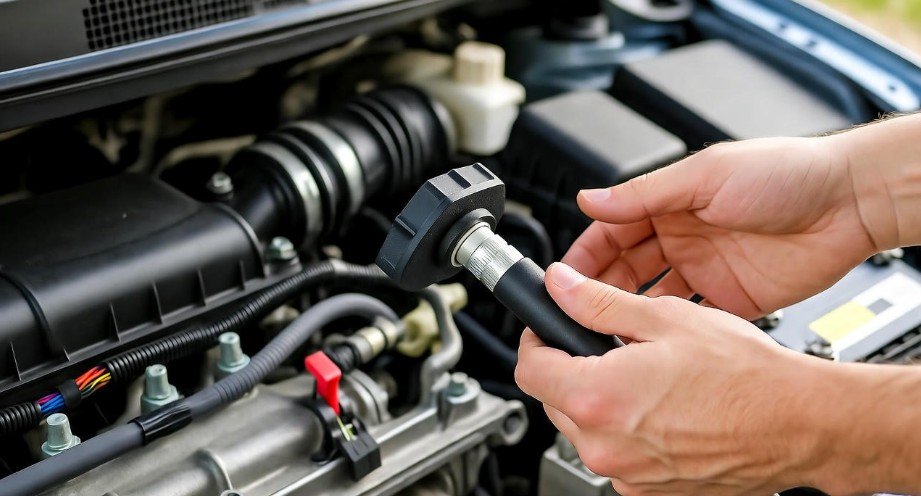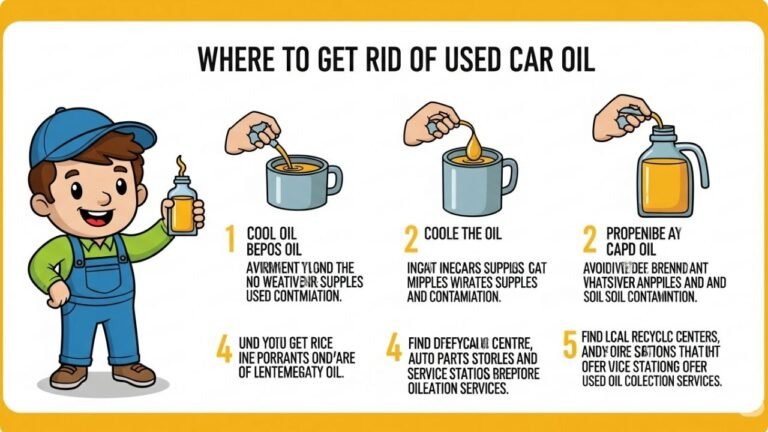How to Diagnose a Faulty TPMS Sensor in Toyota: Step-by-Step Guide

Tire safety is often overlooked until the dreaded warning light flashes on your dashboard. If you’re a Toyota owner, one crucial system keeping you informed about tire pressure is the TPMS sensor. These sensors silently monitor your tires, alerting you when pressure drops or fluctuates unexpectedly. But what happens when the sensor itself becomes the problem? Diagnosing a faulty TPMS sensor can feel like searching for a needle in a haystack, especially when all tires seem fine. The good news is, with the right approach, tools, and a little patience, you can pinpoint which sensor is malfunctioning and keep your Toyota running safely.
In this guide, we’ll break down the process into manageable steps, share expert insights, and give practical tips so even if you’re not a professional mechanic, you can confidently handle this task.
Understanding the Role of TPMS Sensors in Your Toyota

Before diving into diagnostics, it’s vital to understand why TPMS sensors matter. Tire Pressure Monitoring System (TPMS) sensors are small, electronic devices installed inside your tire that constantly measure air pressure. This data is sent to your car’s computer, giving real-time feedback via your dashboard.
A malfunctioning TPMS sensor doesn’t just trigger annoying warning lights; it can mask serious tire issues. Driving on underinflated tires can reduce fuel efficiency, increase wear, and even cause blowouts. Overinflated tires, on the other hand, compromise traction and ride comfort. In short, your TPMS sensor is the silent guardian of your Toyota’s tires. When it fails, your vehicle’s safety net weakens. Recognizing a faulty sensor early—like sudden low-pressure alerts, irregular tire readings, or dashboard warning lights—is crucial. Regular inspection and maintenance are not just smart—they’re necessary.
Essential Tools and Preparation
Diagnosing a TPMS sensor requires the right equipment and preparation. Here’s a simple checklist of what you’ll need:
-
TPMS diagnostic tool – Connects to your Toyota’s onboard computer to read sensor data.
-
Torx screwdriver set – For accessing sensors attached to valve stems.
-
Tire pressure gauge – Confirms sensor readings manually.
-
Tire valve stem tool – Useful for sensor removal or installation.
-
Replacement TPMS sensors – In case a faulty sensor is identified.
-
Air compressor – To adjust tire pressure during tests.
Safety is paramount. Park your Toyota in a well-lit, stable area, engage the parking brake, and wear gloves and eye protection. Start by locating the OBD-II port under your dashboard. Connect your diagnostic tool, turn on the ignition without starting the engine, and follow prompts to retrieve TPMS error codes. Having all tools on hand before beginning ensures you can perform a thorough diagnosis without interruptions or mistakes.
Step-by-Step Guide to Diagnosing a Faulty TPMS Sensor
Let’s break down the process into actionable steps to help you pinpoint the faulty sensor:
Step 1: Reading Error Codes with a TPMS Tool
Your first step is to use a TPMS diagnostic tool to read error codes from the onboard computer. These codes indicate which sensor may be malfunctioning or if there’s a system-wide issue. A common scenario is a single sensor showing communication failure. If multiple codes appear, it may point to a dead sensor battery or a signal interference problem. Keep in mind, not all error codes are crystal clear; cross-referencing codes with your vehicle manual is a smart approach.
Step 2: Conducting a Visual Inspection
Once you have initial data, visually inspect each TPMS sensor. Look for cracks, corrosion, or missing components. Sensors attached to valve stems are particularly vulnerable to road debris and improper tire mounting. Even minor physical damage can cause intermittent sensor failures, which may not always trigger consistent warning lights. Paying attention to these details can save hours of guesswork.
Step 3: Performing Manual Functionality Tests
After the visual check, manually test each sensor. Some diagnostic tools allow you to activate sensors individually. Others use magnets or signal simulators to check sensor response. Observing whether the sensor transmits proper readings under these tests helps distinguish a failing sensor from one that’s merely miscommunicating due to external factors. This step is particularly useful if your diagnostic tool reports irregular or inconsistent data.
Step 4: Comparing Tire Pressure Readings
Finally, cross-check the TPMS readings against a manual tire pressure gauge. A significant discrepancy between the sensor reading and the manual gauge almost always indicates a faulty sensor. Even a sensor with a weak battery might report inaccurate pressure, so this manual verification is critical.
By following these steps carefully, you can confidently identify the problematic TPMS sensor in your Toyota without guesswork.
Troubleshooting Common TPMS Sensor Issues
Even after identifying a faulty sensor, it’s helpful to understand common issues that cause TPMS malfunctions.
-
Connection and signal interference: Loose or corroded sensor connections can prevent data transmission. Nearby wireless devices can sometimes interfere with signals.
-
Battery failure: Most TPMS sensors are powered by small batteries that eventually die. Replacing the battery is often the simplest fix.
-
Sensor reprogramming: Occasionally, sensors require a system reset or reprogramming using a TPMS tool or your vehicle’s computer.
Quick troubleshooting checklist:
-
Inspect sensor connections for corrosion or damage.
-
Avoid signal interference from nearby electronics.
-
Replace old or weak batteries with compatible high-quality ones.
-
Perform resets or reprogramming as needed.
These small checks can save time and prevent unnecessary sensor replacements, ensuring your TPMS system functions reliably.
Professional vs. DIY TPMS Sensor Repair
Once you’ve diagnosed a faulty TPMS sensor, the next decision is whether to fix it yourself or seek professional help. Both options have their pros and cons, and your choice depends on your experience, comfort with automotive repairs, and available tools.
DIY Repair
Pros:
-
Cost-effective compared to dealership repairs.
-
Provides a sense of accomplishment and hands-on learning.
-
Flexibility to work on your schedule without waiting for appointments.
Cons:
-
Limited access to specialized tools, which can make certain tasks challenging.
-
Risk of incorrect diagnosis or installation, which can lead to further issues.
-
Time-consuming, especially for first-time DIYers.
Professional Assistance
Visiting a certified Toyota technician or a trusted tire shop ensures accurate diagnosis and repair. Professionals have access to advanced TPMS tools, replacement parts, and experience in handling sensor issues efficiently. While this may cost more, it reduces the risk of error and guarantees that your TPMS system functions correctly after repair.
Ultimately, prioritizing safety and accuracy is key. If you’re uncertain about the diagnosis or feel uncomfortable performing the repair, professional help is the smarter choice.
Maintaining TPMS Sensor Health
Like any electronic component, TPMS sensors benefit from regular care and monitoring. Maintaining sensor health ensures accurate tire pressure readings and avoids unexpected failures that could compromise safety.
Key Maintenance Tips:
-
Regular tire inspections: Check for uneven wear or sudden pressure drops, which may indicate a sensor problem.
-
Periodic sensor checks: Use a diagnostic tool every 6–12 months to monitor battery life and sensor performance.
-
Replace old sensors proactively: Most TPMS sensors last 5–10 years. Replacing aging sensors before failure prevents roadside emergencies.
-
Keep sensors clean: Dirt and corrosion can interfere with signal transmission. Clean valve stems during tire rotations or maintenance.
By following these practices, you not only extend the life of your TPMS sensors but also enhance overall tire performance and driving safety. A small investment in maintenance can save significant costs and stress in the long run.
Signs of a Failing TPMS Sensor
Recognizing when a TPMS sensor is about to fail can prevent accidents or tire damage. Common warning signs include:
-
Flashing or persistent dashboard warning light: Often the first indication that a sensor is malfunctioning.
-
Inaccurate tire pressure readings: If readings fluctuate without actual changes, the sensor may be failing.
-
Frequent low-pressure alerts: Especially if all tires appear normal on inspection.
-
Physical damage to the sensor: Cracks, corrosion, or wear on the valve stem can affect functionality.
Being proactive and addressing these signs early can save you from sudden tire failures and ensure your Toyota remains safe and efficient on the road.
Common FAQs About TPMS Sensors in Toyota
1. How do I know which TPMS sensor is faulty in my Toyota?
Use a TPMS diagnostic tool to scan each sensor. Look for error codes and cross-check with manual tire pressure readings to identify discrepancies.
2. Can I drive with a faulty TPMS sensor?
Technically yes, but it’s not safe. Without accurate tire pressure data, you risk underinflated or overinflated tires, which can reduce traction and fuel efficiency.
3. How long do TPMS sensors last?
Most sensors last between 5–10 years, depending on usage and battery life. Regular inspection can help prevent unexpected failures.
4. Can I replace a TPMS sensor myself?
Yes, if you have the right tools and experience. However, improper installation can cause errors, so consider professional help if unsure.
5. Why does my TPMS light keep coming on after replacing a sensor?
The new sensor may need reprogramming or the system might require a reset using a TPMS tool. Check installation and calibration carefully.
6. Do all Toyota models use the same TPMS sensors?
No, sensor compatibility varies by model and year. Always verify part numbers before purchasing replacements.
7. How often should I check TPMS sensors?
It’s good practice to inspect sensors every 6–12 months, or whenever you rotate or replace tires.
Quick Tips for TPMS Sensor Longevity
-
Rotate tires carefully: Avoid damaging sensors during rotations.
-
Check valve stems: Corrosion or leaks around the valve stem can affect readings.
-
Avoid extreme temperature swings: Sudden temperature changes can affect sensor batteries.
-
Use quality replacement parts: Cheap or incompatible sensors may fail prematurely.
A proactive approach ensures your TPMS system remains reliable, accurate, and ready to protect your tires.
Table: DIY vs. Professional TPMS Repair Comparison
| Factor | DIY Repair | Professional Repair |
|---|---|---|
| Cost | Lower | Higher |
| Tools Required | TPMS tool, screwdrivers, gauges | Advanced diagnostic tools provided |
| Time Investment | Longer | Shorter |
| Accuracy | Depends on experience | High |
| Safety | Moderate | Maximum |
| Learning Experience | High | Low |
Conclusion
Diagnosing a faulty TPMS sensor in your Toyota doesn’t have to be a daunting task. By following a structured approach—reading error codes, performing visual inspections, conducting manual tests, and comparing tire pressures—you can confidently pinpoint which sensor is malfunctioning.
Regular maintenance, awareness of warning signs, and understanding the difference between DIY and professional repair options empower you to make informed decisions. Remember, your TPMS sensors are more than just electronics—they’re a crucial part of your vehicle’s safety network. Taking proactive steps to keep them functional ensures safer driving, better tire performance, and peace of mind on every journey.
By treating your TPMS sensors with care, performing timely replacements, and monitoring their health regularly, you can avoid unexpected tire issues and enjoy the reliability that Toyota vehicles are known for.






